You are viewing 1 of your 1 free articles
The 100 passes game
This session looks at transitioning between attack and defence. It’s useful for us because it examines all the elements of pressure, possession, technique and fitness, and isolates in opponents weak areas that can be exploited.
| Area | Half pitch |
| Equipment | Balls, cones |
| No. of Players | 16 (8v8) |
| Session Time | Warm-up 10mins, game 20mins, development 20mins |
This session looks at transitioning between attack and defence. It’s useful for us because it examines all the elements of pressure, possession, technique and fitness, and isolates in opponents weak areas that can be exploited.
When we have the ball, transition play is key. When we don’t have the ball, the ability to make quick and positive decisions comes to the fore, and this session looks at both of those scenarios.
What do I get the players to do?
To begin, we use a simple warm-up to promote active body and mind. In a 20x20-yard passing diamond, we put a player on each of the first three cones, and two players on the fourth cone – this is where the ball starts. Players pass the ball along each edge to a team mate who receives on the half-turn. Each player then follows his pass (1).
1
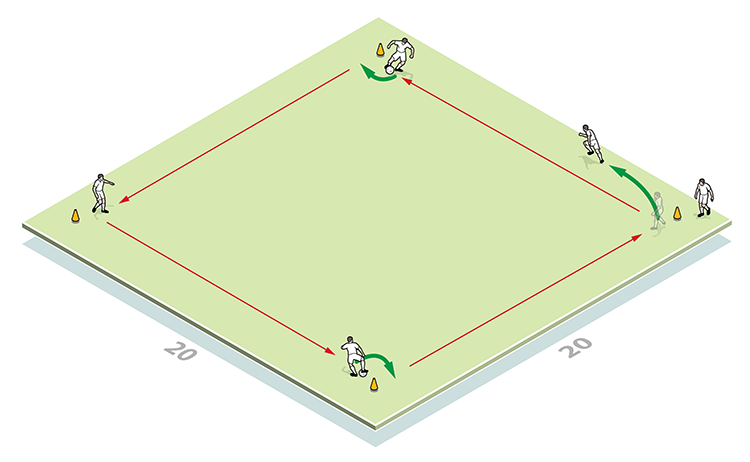
Next we move on to an 8v8 high-energy passing game in a 20x10-yard area. Teams start in opposing halves. In the example, the coach serves the ball to the white team. Three blues move into the white half to attempt to win the ball (2a).Whites must count the number of completed passes. Once a tackle or interception is made, blues return to their own half, and three whites must attempt to win back possession in a similar 8v3 overload (2b). The first team to achieve 100 completed passes, accumulated from each time they are in possession, is the winner. We will vary the number of defenders to change the difficulty of the task.
2a

2b
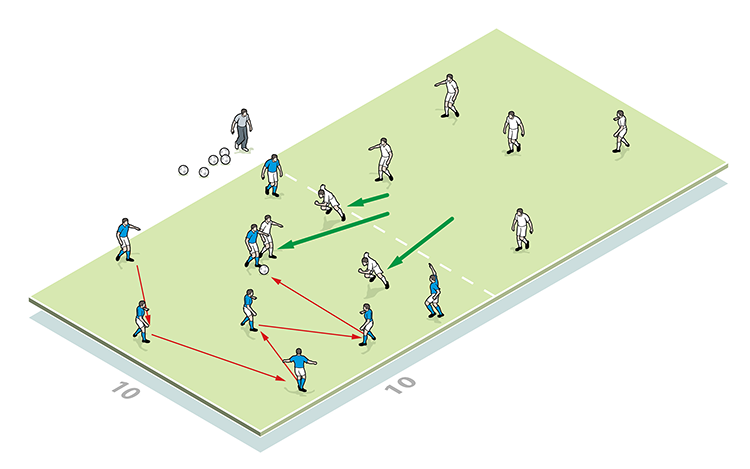
How do I progress the session?
We create a new possession game using two floaters. This fitness-themed task starts off 3v3 in a 15x15-yard box with one floater, who works with the team in possession. The other lone floater is located in a similar box 20-30 yards away (3a).
3a
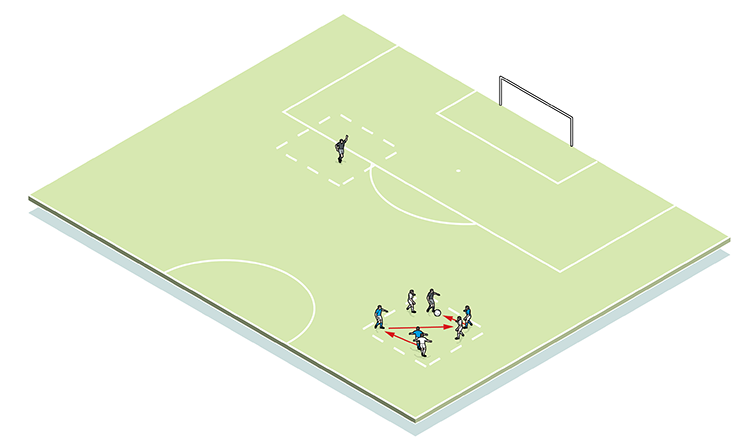
A team has to complete five passes before transferring the ball to other floater, at which point everyone sprints to that box where the task continues (3b).
3b
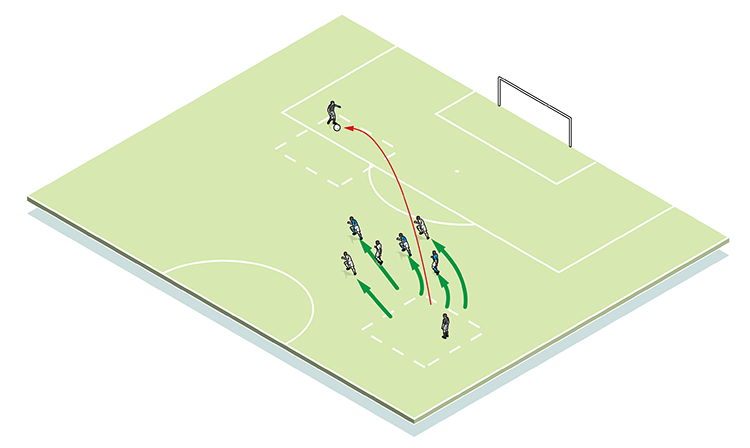
We progress the game further by adding in a third box to give the team in possession a choice of where to direct the long pass (3c).
3c
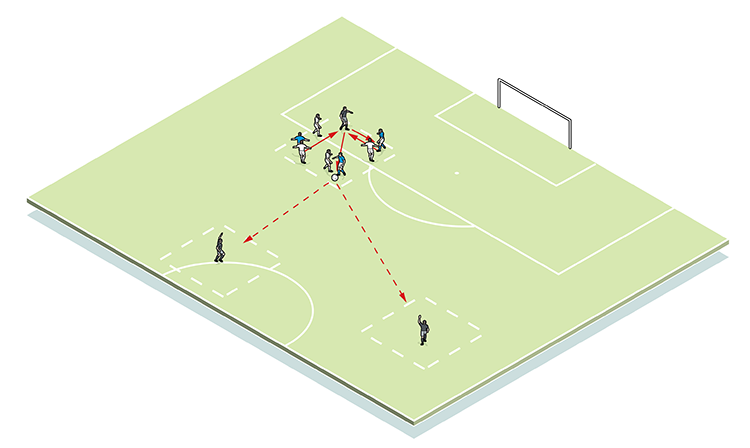
What are the key things to look for technically/tactically?
Intensity of passing and communication is essential throughout. In the 20x10-yard game, the emphasis is on defenders to press as a three, with attackers expected to make a minimum of 10 passes per phase.
For the two-box possession game, we’re looking for the speed of transition and players’ versatility in combining short and long passes.
Related Files
Editor's Picks
Intensive boxes drill with goals
Penetrating the final third
Creating and finishing
My philosophy
Pressing initiation
Compact team movement
Defensive organisation
Back three tactics
Counter-pressing as an offensive weapon
Coaches' Testimonials

Alan Pardew

Arsène Wenger

Brendan Rodgers

Carlos Carvalhal

José Mourinho

Jürgen Klopp

Pep Guardiola

Roy Hodgson

Sir Alex Ferguson

Steven Gerrard
Coaches' Testimonials

Gerald Kearney, Downtown Las Vegas Soccer Club

Paul Butler, Florida, USA

Rick Shields, Springboro, USA

Tony Green, Pierrefonds Titans, Quebec, Canada
Join the world's leading coaches and managers and discover for yourself one of the best kept secrets in coaching. No other training tool on the planet is written or read by the calibre of names you’ll find in Elite Soccer.
In a recent survey 92% of subscribers said Elite Soccer makes them more confident, 89% said it makes them a more effective coach and 91% said it makes them more inspired.
Get Monthly Inspiration
All the latest techniques and approaches
Since 2010 Elite Soccer has given subscribers exclusive insight into the training ground practices of the world’s best coaches. Published in partnership with the League Managers Association we have unparalleled access to the leading lights in the English leagues, as well as a host of international managers.
Elite Soccer exclusively features sessions written by the coaches themselves. There are no observed sessions and no sessions “in the style of”, just first-hand advice delivered direct to you from the coach.








